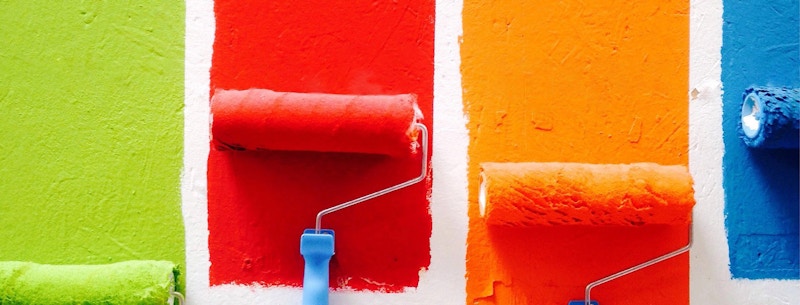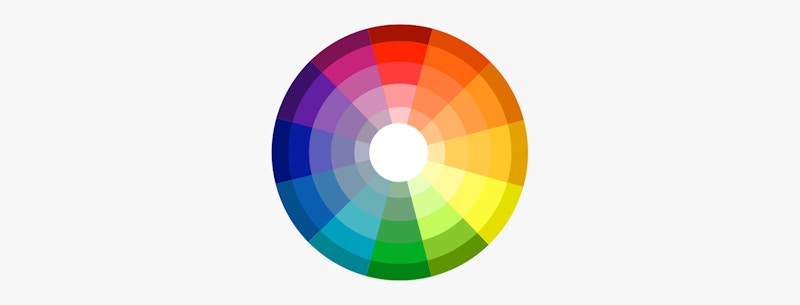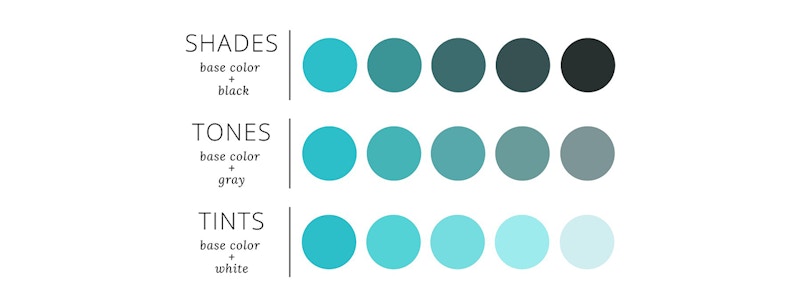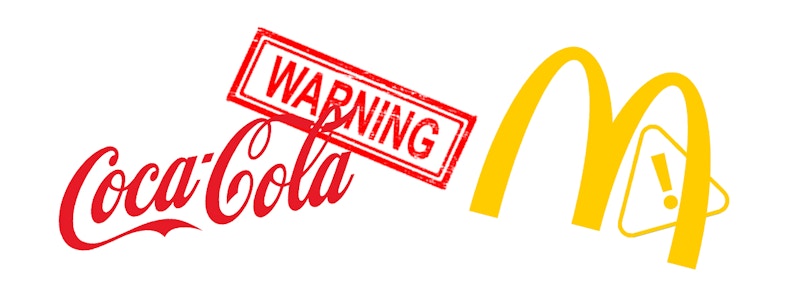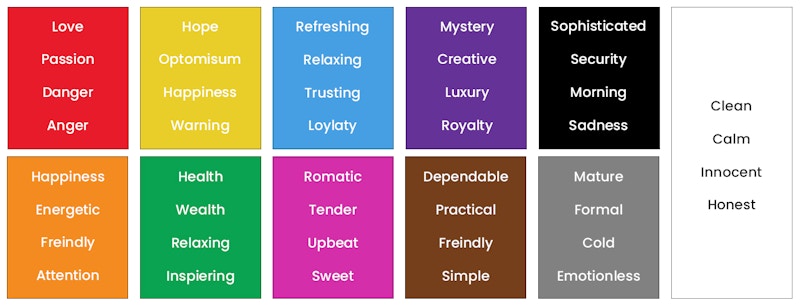Cool Colours
Cool Colours such as Blue, Purple and Green are usually calming and soothing but can also express sadness. Purple is often used to help spark creativity as it’s a mixture of blue (calm) and red (intense).
Happy Colours
Think Happy, think warm colours. Bright and lighter colours like yellow, orange, pink and red are more uplifting and happy, while pastel colours like light pinks and baby blues are also happy and optimistic. They are also associated with childhood and have an almost youthful exuberance.
Sad Colours
Think Sad (don’t actually), think cold colours. Sad Colours are generally Colours that are darker and more muted. Black and grey are the quintessential sad Colours associated with death and mourning, but dark and muted cool Colours like blue, dark green or neutrals like brown or beige can have a similar effect on feelings and emotions depending on how, and where, they are used.
Calming Colours
Colours like blue and green can make you feel calm, especially ones that are reminiscent of nature and the sea. Lighter Pastel Colours are very ‘cooling’ like baby blue, soft yellow and moss green have a calming and relaxing effect.
Neutral colours can also have a calming effect, white, beige and grey can work in certain environments. More often than not, the fewer Colours you combine and the simpler and more pared back the design, the more calming it will feel.
Energizing Colours
Strong, bold, bright Colours, as well as neon Colours, can have a powerful effect on emotions. Bright red, yellow and neon green can feel energizing and vibrant as well as make you feel more alert. They can also be quite garish and make people feel uncomfortable in big swathes.
Bright energising colours will grab your attention and stand out from their surroundings. Highly pigmented, strong Colours like royal blue, turquoise, magenta and emerald green can also have a stimulating effect and make you feel refreshed and energized.
So how do individual colours make you feel?
Red makes you feel passionate and energized.
Red is the warmest of colours and triggers some conflicting emotions. Love is red, Passion is red, yet so is danger and anger. Red has been proven to increase the heart rate, a sign of both love and danger and, as said above, can even increase your appetite.
Orange makes you feel energized and enthusiastic.
Orange communicates a feeling of happiness, animation and spirit. Much like red it can draw attention but is not as overpowering. It is bold yet more reserved than red is, it is energetic yet slightly friendly.
Yellow makes you feel happy and spontaneous.
Of all the warm colours, Yellow is the most energetic and lively. Yellow is sunshine and hope. It is an optimistic colour and communicates drive and happiness. However, it is also a colour that many people find very distracting, as it reflects a lot of light that can be overwhelming.
Green makes you feel optimistic and refreshed.
Green symbolizes health as well as wealth and is very easy on the eye, reflecting a good amount of light while remaining balanced. It is refreshing and relaxing while being optimistic and inspiring. The colour of nature, green also symbolises growth, rebirth and new beginnings.
Blue makes you feel safe and relaxed.
The favourite of all the colours, when seeing blue the body actually releases chemicals that relax. It is calming, refreshing and relaxing.
Purple makes you feel creative.
I think I may be the only one whose favourite colour is purple! Purple is associated with mystery, creativity, royalty, wealth and luxury.
Lighter shades of purple like violet are often used to soothe or calm the viewer, while the darker shades are more regal and luxurious.
Pink makes you feel playful and romantic.
Pink represents femininity and romance, sensitivity and tenderness. It’s inherently sweet, cute and charming, upbeat.
Brown makes you feel humble and down to earth.
Brown is traditional and creates a sense of stability and support. It is warm, friendly, practical and dependable.
Black feels sophisticated, serious and sad.
Black is bold and powerful, it evokes luxury, elegance, professionalism and simplicity. However, Black can have some negative connotations being the Colour of mourning, fear and sadness. It can feel intimidating and unapproachable as well.
White makes you feel pure, fresh and clean.
White evokes purity and innocence and creates a minimalist aesthetic. It can be very simple, clean and modern. It’s also the most neutral Colour of all. It creates space, evokes natural light and is upbeat and calm. It is also a symbol of new beginnings, potential and rebirth.
Grey feels serious and professional.
As opposed to Black, Grey is a more mature and responsible Colour. Its positive connotations include formality and dependability, professionalism while being contemporary. While the negative side can mean being overly conservative, traditional, cold and emotionless.
